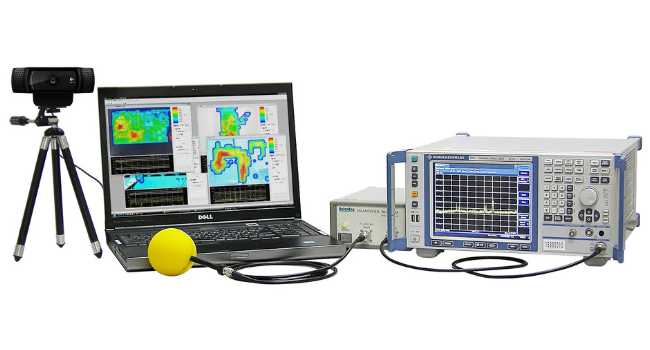Yes, but you should still take care never to exceed the DSA815’s max input power or voltage (+20dBm or 100mW and 50VDC abs. max – pulsed waveforms can easily exceed this e.g. direct from a LISN – see below). The DSA internal attenuator function is variable to give relative 0-30dB and whilst it does not increase the permissible power, it is designed to allow the instrument to optimise its dynamic range, enabling it to measure louder signals without distortion and maintaining good accuracy.
Note: A LISN isolates the power mains from the equipment under test, isolates any noise generated by the EUT, and couples the signals generated by the EUT to the spectrum analyser.
Figure 3: Standard Conducted Emissions pre-compliance setup via a transient limiter. IMPORTANT: it is up to you to choose a limiter suited to your own system and testing regime and do your own checks first: transients can easily exceed the input rating of your analyser (e.g. at switch-on – it is generally regarded as good LISN practice to avoid switching on the LISN with any analyser connected!) A modern DSA’s internal level indicator is not intended to warn against fast transients and internal attenuators do not provide greater input circuit protection.
CONCLUSION: if in doubt do your own measurements in any test environment on a resilient instrument (such as a suitably voltage-rated fast scope) first to ensure you always operate your more sensitive instruments, such as spectrum analysers, within the stated input limit envelope.

































































































 FREE SHIPPING £75+
FREE SHIPPING £75+
 CELEBRATING 50+ YEARS
CELEBRATING 50+ YEARS
 PRICE MATCH GUARANTEE
PRICE MATCH GUARANTEE




